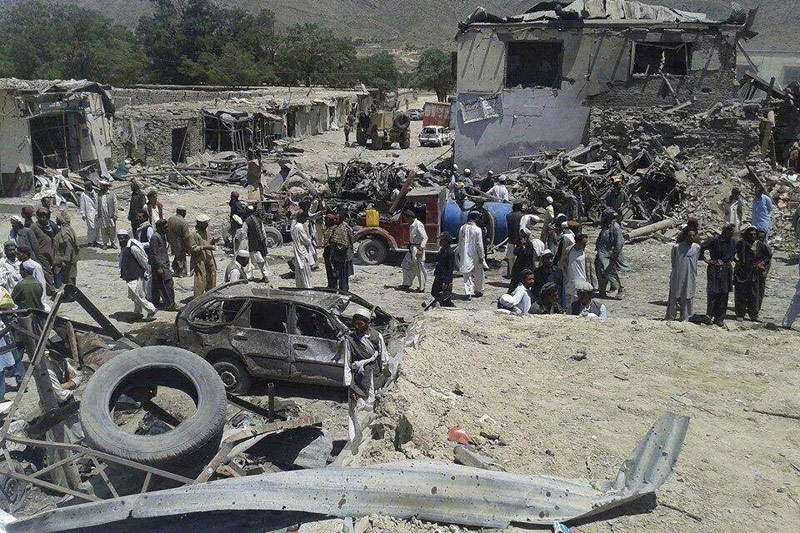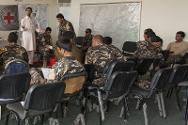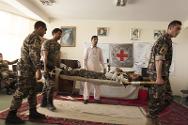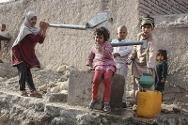Afghanistan: Shocking rise in civilian casualties
18-07-2014 Operational Updateby 14/03
The horrific bombing in Paktika on 15 July, which killed dozens of people – including women and children – and injured many more, is yet another sign of a grim upsurge of civilian casualties in Afghanistan.

Urgon, Paktika Province, Afghanistan, 15 July 2014. Villagers gather at the site of a car bomb attack on a crowded market. © Reuters
“This trend is totally unacceptable,” said Anthony Dalziel, head of ICRC operations for South Asia. "An alarming number of civilians are being killed or injured in incidents such as the marketplace bombing in Paktika or are caught in the cross-fire between Afghan security forces and opposition groups."
In a recent report, the United Nations confirmed a 24% rise in conflict-related civilian casualties compared with the same period last year.
Under international humanitarian law, also known as the law of armed conflict, attacks directed against civilians are absolutely prohibited. State and non-State entities and all others involved in conflict are responsible for ensuring that only legitimate military targets are attacked, and that only those taking direct part in the fighting are targeted. When conflict erupts or is ongoing, civilians must be kept safe from harm.
International humanitarian law also states that medical facilities, personnel and transport being used for medical purposes must be spared and that wounded and sick people must – to the fullest extent practicable and with the least possible delay – have access to medical care.
Between April and June, the ICRC
- carried out 29 visits to 22 places of detention holding a total of almost 18,200 detainees;
- worked closely with the Afghan Red Crescent Society to gather over 1,200 Red Cross Messages (brief, personal messages to relatives made otherwise unreachable by the conflict) and delivered almost 900, mostly to detainees and their families;
- continued to support Mirwais and Sheberghan hospitals, which admitted some 10,700 patients to their surgical, medical and obstetrics and gynaecology wards, treated over 61,200 outpatients, and carried out over 3,340 surgical operations;
- gave first-aid training to some 640 weapon bearers (including members of the armed opposition), medical personnel and taxi drivers who often transport wounded people to health facilities from the front lines. Over 380 other people learned first aid from ICRC-trained instructors;
- aided 87 paraveterinarians from communities in southern and central Afghanistan who dewormed and otherwise cared for 460,000 head of livestock to improve the animals’ health and productivity;
- improved the water supply and sanitary conditions for 5,000 detainees in seven places of detention;
- continued support to 48 Afghan Red Crescent clinics, which gave outpatient consultations for over 172,600 people and administered over 89,700 doses of vaccines against common childhood diseases and polio
Another task coming within the ICRC’s humanitarian mandate is the retrieval of mortal remains, since it is important for families to receive the bodies of loved ones killed in fighting. During the recent flare-up of hostilities in and around Sangin, the organization facilitated the retrieval of scores of bodies from both sides, as well as those of non-combatants. It also transported wounded soldiers, opposition fighters and civilians to medical facilities, using the services of specially selected and trained taxi drivers.
For further information, please contact:
Jessica Barry, ICRC Kabul, tel: +93 707 740 526
Rafiullah Stanikzai, ICRC Kabul, tel: +93 788 308 908
Anastasia Isyuk, ICRC Geneva, tel: +41 22 730 30 23 or +41 79 251 93 02



